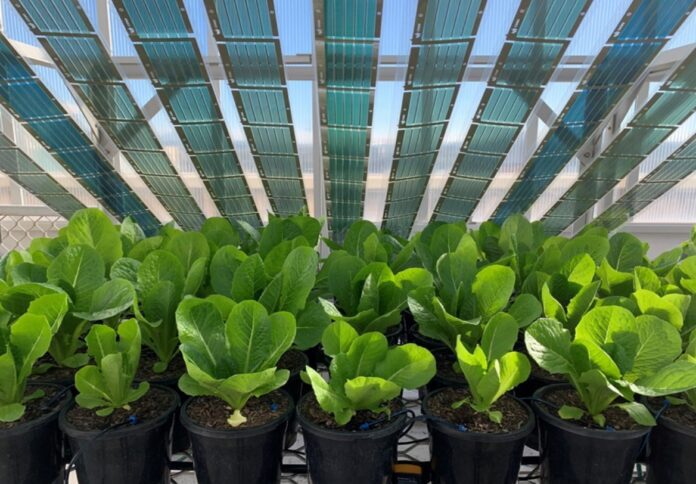
Australia’s national science agency CSIRO launched a ‘shark tank’-style competition to grant internal funding for the development of glasshouses that could potentially reduce emissions and enhance plant growth.
As a result, the winning team, including researchers Anthony Chesman, Mei Gao and Doojin Vak from Manufacturing and Cathryn O’Sullivan from Agriculture and Food, presented impactful research to achieve the agency’s goal.
In particular, the team presented the innovative idea to install lightweight, semi-transparent, printed solar films in glasshouse, in collaboration with a manufacturing team.
According to the researchers, the coatings might potentially improve growing conditions through the modulation of transmitted light waves in addition to producing energy to run the glasshouses.
After obtaining financing, the study team set about developing their project further, titled “Power Plants: Printable Solar Films for Agrivoltaic Applications.”
They devised a precise strategy for testing the solar films in glasshouses at our UQ St Lucia campus in Brisbane for 18 months.
The project is scheduled to be completed in early 2024, according to researchers.
Cathryn and the Agriculture and Food team tested the intended solar film setup using shade cloth before installing the solar film.
In the study, they were investigating how various shade options influenced plant development in lettuce seedlings.
The placement of the shade cloth mirrored the intended arrangement of the solar film strips, and the results of this experiment’s data on plant development will serve as a benchmark against which to assess the effects of solar film and shade cloth on growth.
To date, Cathryn and the Agriculture and Food team have just finished installing the first solar films in the glasshouse at St Lucia.
They will be monitoring plant growth and solar cell performance with our Manufacturing team from now until October.
CSIRO said Australia’s current solar cell technology is used in these solar films, while the results of this phase will be utilised to create solar cells that are optimised for plant growth, with field testing to follow.
If the technique is used in glasshouses across CSIRO, a final study will examine plant growth and solar cell performance and estimate the potential emissions reduction.




















